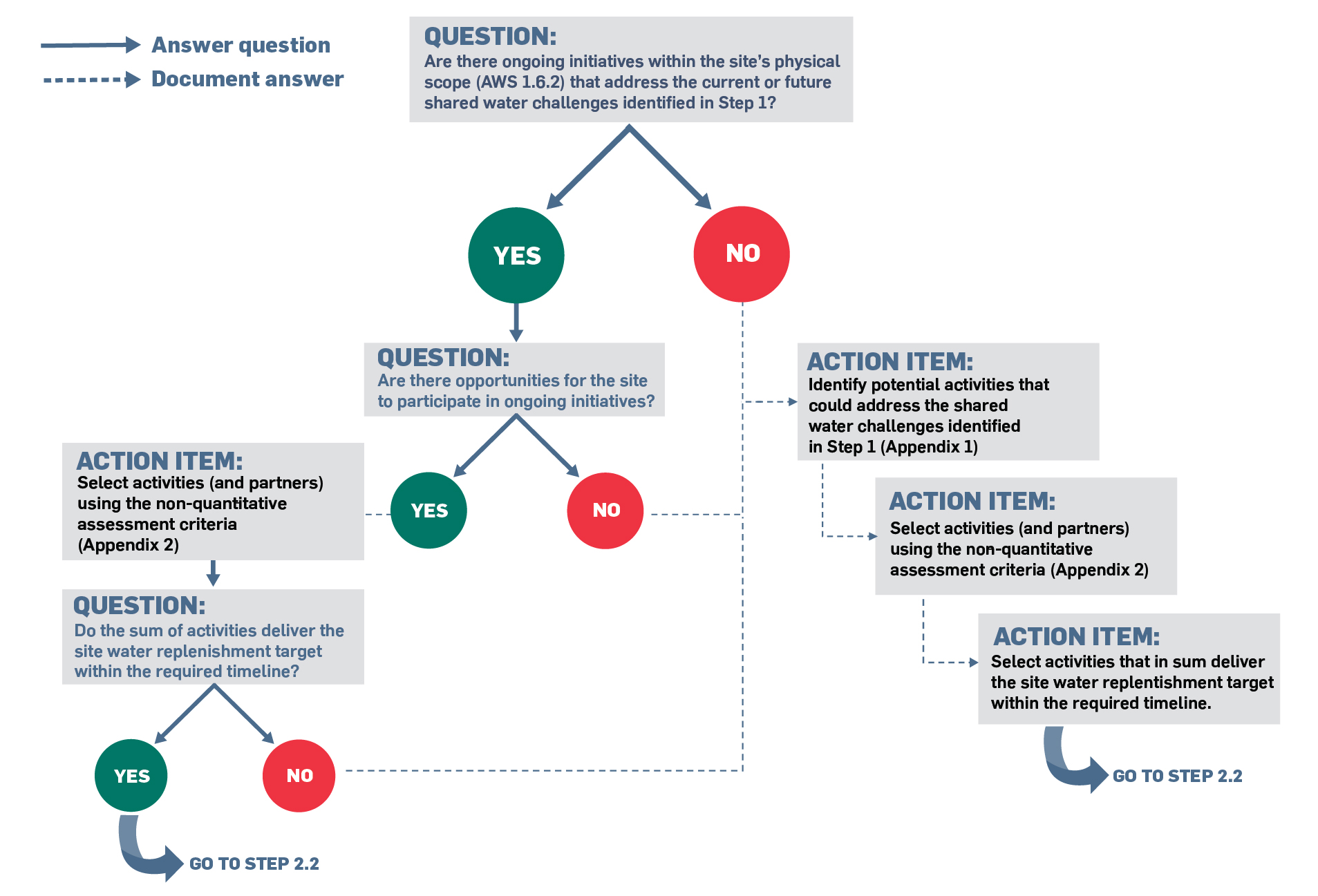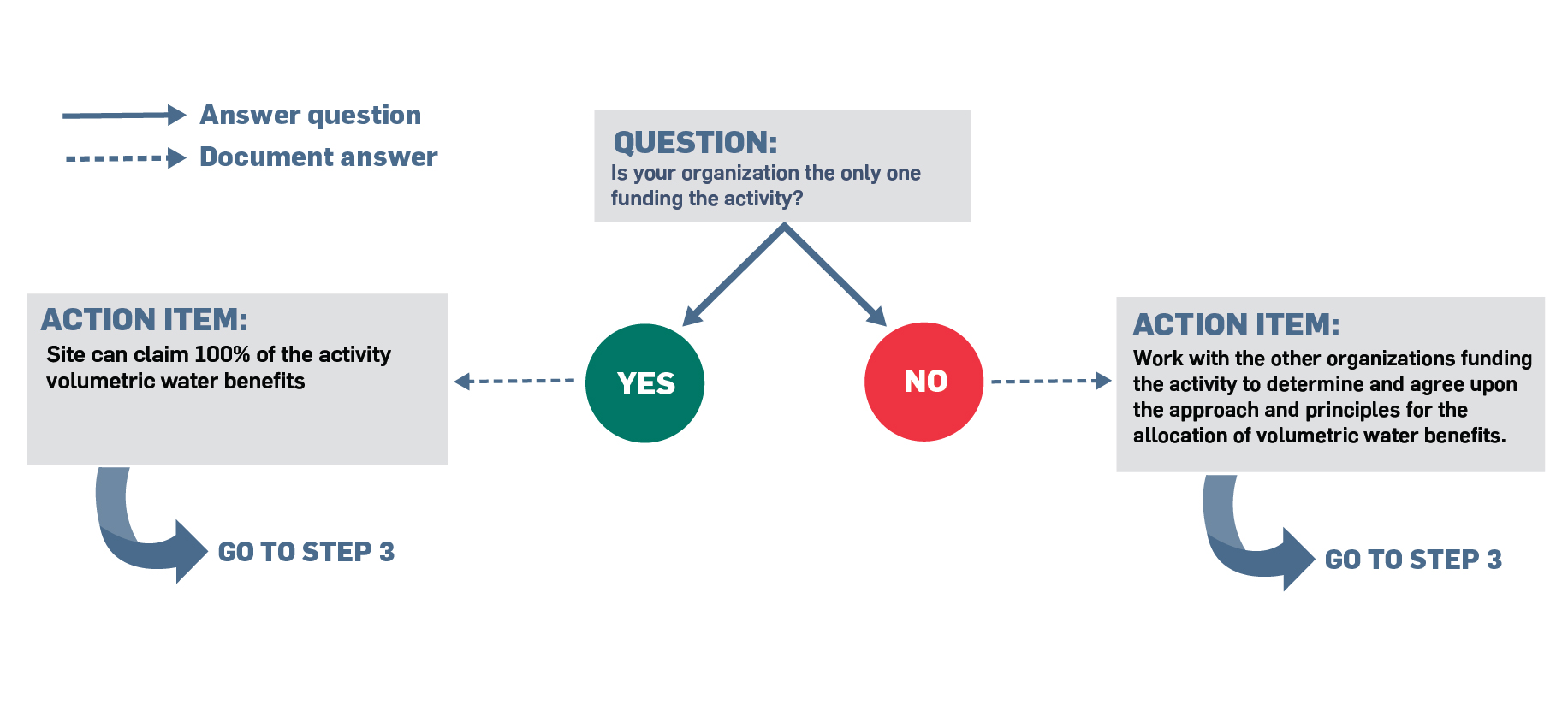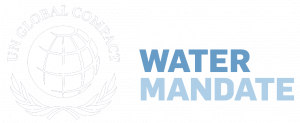Prerequisites for Step 2.1 include an understanding of the elements of effective water stewardship activities (i.e., VWBA activity guidelines) (Reig et al. 2019) and a definition of the volume of water required to meet the site’s water replenishment target during the current reporting period.
Decision tree to help complete Step 2.1:

Prerequisites for Step 2.2 include submit the list of proposed water stewardship activities (and partners) to the relevant internal water stewardship champions and other parties as appropriate for review and approval.
Decision tree to help complete Step 2.2:

The approach to, and principles for, allocation should be determined and agreed upon with all activity partners before implementing the activity. For example, if the total benefits are allocated to three different companies on the basis of cost contribution, there should be agreement on what is included in the total cost used for the cost-sharing calculation (e.g., planning, design, maintenance, monitoring, reporting). For some very large projects (e.g., water funds, projects that are expanding over time, or projects with many funders), it may be difficult to determine total costs. In these cases, it may be possible to work with the activity partners to define a portion of the project that can be 100 percent funded, eliminating the need to determine a total project cost for the entire large project.
Required outputs of Step 2 include:
- List of approved water stewardship activities (and partners) that can be implemented to meet the site’s water replenishment target within the required timeline.
- Agreed-upon approach and principles for the allocation of VWBs for each water stewardship activity.

